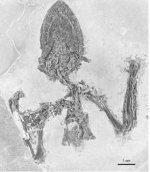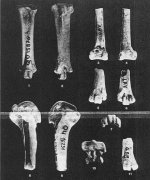Fred Ruhe
Well-known member

Paul M. Oliver, Holly Heiniger, Andrew F. Hugall, Leo Joseph and Kieren J. Mitchell, 2020
Oligocene divergence of frogmouth birds (Podargidae) across Wallace's Line.
Biology Letters 16(5): 20200040.
doi: https://doi.org/10.1098/rsbl.2020.0040
Abstract and full text: https://royalsocietypublishing.org/doi/10.1098/rsbl.2020.0040
Wallace's Line demarcates the transition between the differentiated regional faunas of Asia and Australia. However, while patterns of biotic differentiation across these two continental landmasses and the intervening island groups (Wallacea) have been extensively studied, patterns of long-term dispersal and diversification across this region are less well understood. Frogmouths (Aves: Podargidae) are a relictual family of large nocturnal birds represented by three extant genera occurring, respectively, in Asia, ‘Sahul’ (Australia and New Guinea) and the Solomon Islands, thus spanning Wallace's Line. We used new mitochondrial genomes from each of the extant frogmouth genera to estimate the timeline of frogmouth evolution and dispersal across Wallace's Line. Our results suggest that the three genera diverged and dispersed during the mid-Cenozoic between approximately 30 and 40 Mya. These divergences are among the oldest inferred for any trans-Wallacean vertebrate lineage. In addition, our results reveal that the monotypic Solomons frogmouth (Rigidipenna inexpectata) is one of the most phylogenetically divergent endemic bird lineages in the southwest Pacific. We suggest that the contemporary distribution of exceptionally deep divergences among extant frogmouth lineages may be explained by colonization of, and subsequent long-term persistence on, island arcs in the southwest Pacific during the Oligocene. These island arcs may have provided a pathway for biotic dispersal out of both Asia and Australia that preceded the formation of extensive emergent landmasses in Wallacea by at least 10 million years.
Enjoy,
Fred
Oligocene divergence of frogmouth birds (Podargidae) across Wallace's Line.
Biology Letters 16(5): 20200040.
doi: https://doi.org/10.1098/rsbl.2020.0040
Abstract and full text: https://royalsocietypublishing.org/doi/10.1098/rsbl.2020.0040
Wallace's Line demarcates the transition between the differentiated regional faunas of Asia and Australia. However, while patterns of biotic differentiation across these two continental landmasses and the intervening island groups (Wallacea) have been extensively studied, patterns of long-term dispersal and diversification across this region are less well understood. Frogmouths (Aves: Podargidae) are a relictual family of large nocturnal birds represented by three extant genera occurring, respectively, in Asia, ‘Sahul’ (Australia and New Guinea) and the Solomon Islands, thus spanning Wallace's Line. We used new mitochondrial genomes from each of the extant frogmouth genera to estimate the timeline of frogmouth evolution and dispersal across Wallace's Line. Our results suggest that the three genera diverged and dispersed during the mid-Cenozoic between approximately 30 and 40 Mya. These divergences are among the oldest inferred for any trans-Wallacean vertebrate lineage. In addition, our results reveal that the monotypic Solomons frogmouth (Rigidipenna inexpectata) is one of the most phylogenetically divergent endemic bird lineages in the southwest Pacific. We suggest that the contemporary distribution of exceptionally deep divergences among extant frogmouth lineages may be explained by colonization of, and subsequent long-term persistence on, island arcs in the southwest Pacific during the Oligocene. These island arcs may have provided a pathway for biotic dispersal out of both Asia and Australia that preceded the formation of extensive emergent landmasses in Wallacea by at least 10 million years.
Enjoy,
Fred





